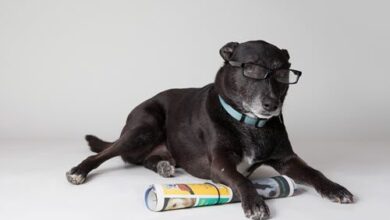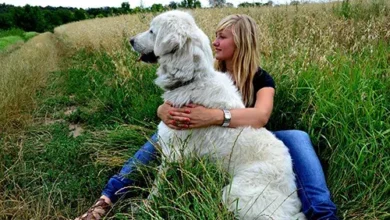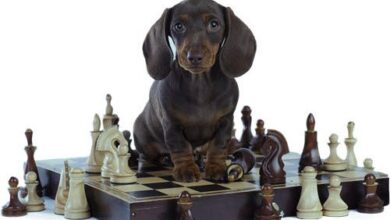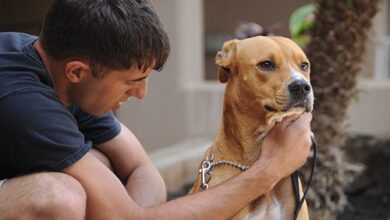How to Educate Your Puppy – Right Beginning of Obedience
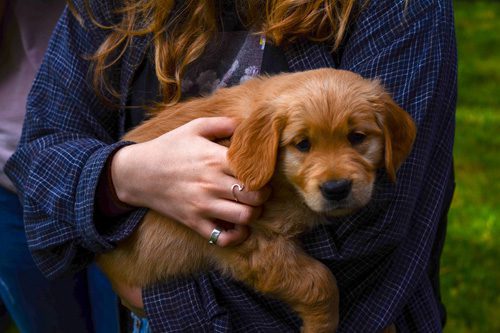

Know that the puppy’s learning began in his first weeks with his mother. Indeed, his mother will have taught him, for example, inhibition of the bite. It is therefore your responsibility to continue these learnings after adoption.
You can also be inspired by the behavior of the mother to reproduce during some learning the puppy will understand much faster what you expect from him since you will have the same attitude as his mother, and therefore the same language as him.
For example, when your puppy nibbles your hands, push a little cry “ouch” (even if you do not hurt, we agree) then take the puppy by the skin of the neck, place it away from you, and ignore him, turn him back. He knows very well since his mother will have done the same way when he bit a puppy off the litter. This is called learning to inhibit bite.
Be careful though when you take your puppy by the neck, do not hurt him. If you’re not sure you’re going over a limit, just simply ignore your puppy without moving it through the skin of your neck.
How to start the education of your puppy?
But then, you will tell us, how to start the education of his puppy? Well, very smoothly. Your puppy must equate education and learning new things with something positive.
We advise you to start with simple exercises so as not to risk putting your puppy in a situation of failure. Note that if a puppy has difficulty performing an exercise, always praise it before stopping for the session to end on a positive note and a success and not a failure.
Attention, the duration of the sessions must not exceed 10 minutes. Just like children in humans, the time of concentration is not high, so you have to adapt to the puppy’s pace. Always think that education should be synonymous with pleasure for him, if you exhaust your puppy he will equate the education sessions with something unpleasant for him.
Any animal will not go to what is unpleasant but rather to what gives him a pleasant feeling.
In addition, note that in the majority of cases, we much more easily remember the reproaches that we are made rather than the compliments. Well for the dog it’s the same thing. If you just tell him what’s wrong, if you just punish him, he’ll only remember that. So in summary: we reward good behavior and we ignore the bad.
Start Teaching Basic Commands
As with humans, the first weeks and months of a puppy’s life are critical to their development. Imagine if we had to wait until adulthood before learning to say hello, thank you, goodbye or using a fork and a knife, our social contacts would be complicated. Well for puppies it’s the same thing, waiting before starting the education of his puppy is to risk making him unsuitable socially later.
In fact, from the adoption of your puppy, from two months, you can begin learning basic indications. In addition, starting at this age is much easier than starting in adulthood with a dog that has already acquired conditions that sometimes lead to annoying behaviors.
Also enjoy the first few months to teach your puppy not to chew, do not jump, do not bark excessively, be clean, stay alone, etc. All this learning will be much easier to learn as a puppy.
Never forget: it’s always easier to educate a puppy than to re-educate a dog.
Safe and Basic orders
The first orders that your puppy must learn are, what we call, basic “safe” orders such as: sitting, lying, hitching, not moving, or even walking. Remember to work well with the foot call which is, by far, the most important indication, especially if you walk your puppy in places with high stimulation (cars, bikes, joggers, dogs, etc.).
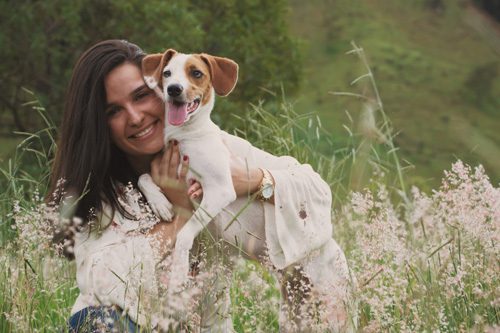

These orders will serve as a basis for you to learn new things, more complicated and sometimes completely useless but so much funnier. Many new dog owners today realize that this is the time to start molding & shaping the behavior that you want.
Puppies are just like a sponge…and they just absorb everything they smell, hear, or see. So this is a perfect time to show them how to fit in. Your puppy loves to be with you, as they are social creatures, and good habits must be set early on before he gets his ideas.
Puppy Obedience Tips and Advice
Never forget to reward your puppy when he correctly performs the desired behavior. But beware, for some dogs, the caress will not be a positive reward. It is necessary to observe well and to know your dog to know what will make him really pleasure: caress, session of game, candy? Your turn to try!
Most behavioral problems in adult dogs could have been prevented in puppyhood through proper socializing. Training with a calm and assertive energy, with consistent borders and limitations, will show your dog who the pack leader is from the start. It’s an investment in your future, as your dog will be with you for close to 10-15 years, or longer.
The old style training with choke collars and rough handling is not too popular in training today and what we can learn working with large groups of dogs. You don’t need to say anything. By using our technique, you will have your dog watching and following you in no time at all.
Finding an Obedience class where the trainer doesn’t use extreme force or one that isn’t going to cause fear or anxiety in your dog is very important. Also, one who believes in calm assertive energy is going to be able to communicate with the dog so much better and in a positive way.
We want always to learn how to show a dog in the ring and also be an obedience trainer. I was trained by a professional master trainer who was still using some of the harsh and tough old styles of training. I have many, many years of experience with dogs and have had a very successful dog daycare for the last 8 years, so I took only what I needed and developed my style of calm and assertive training.


